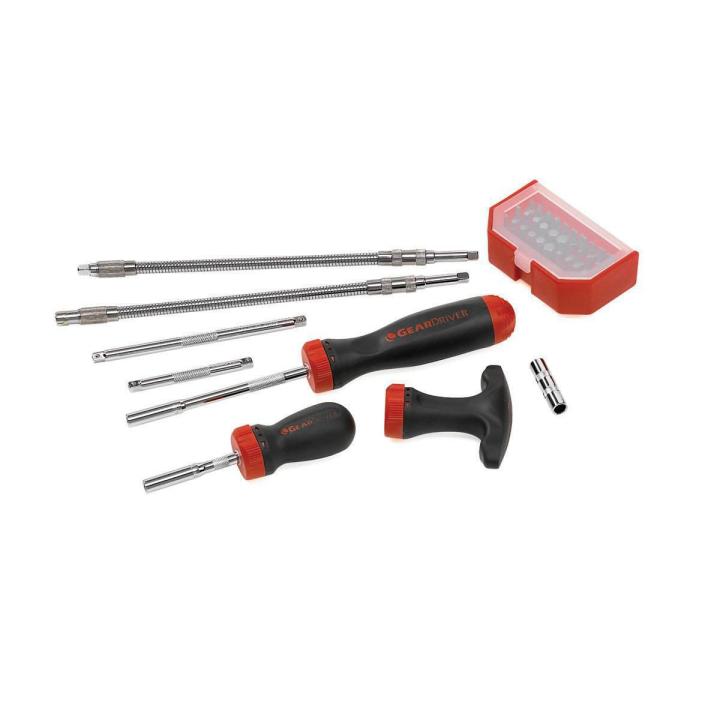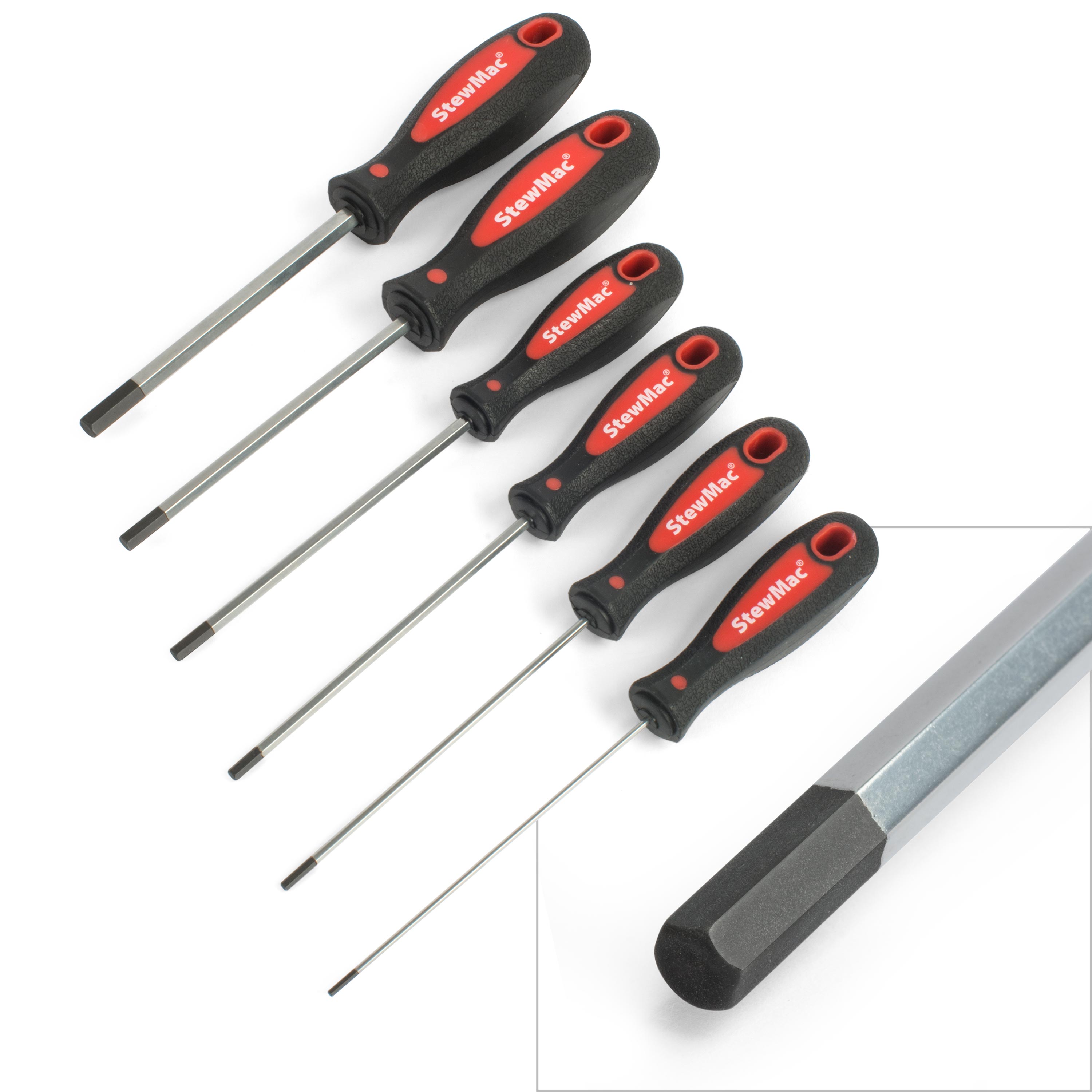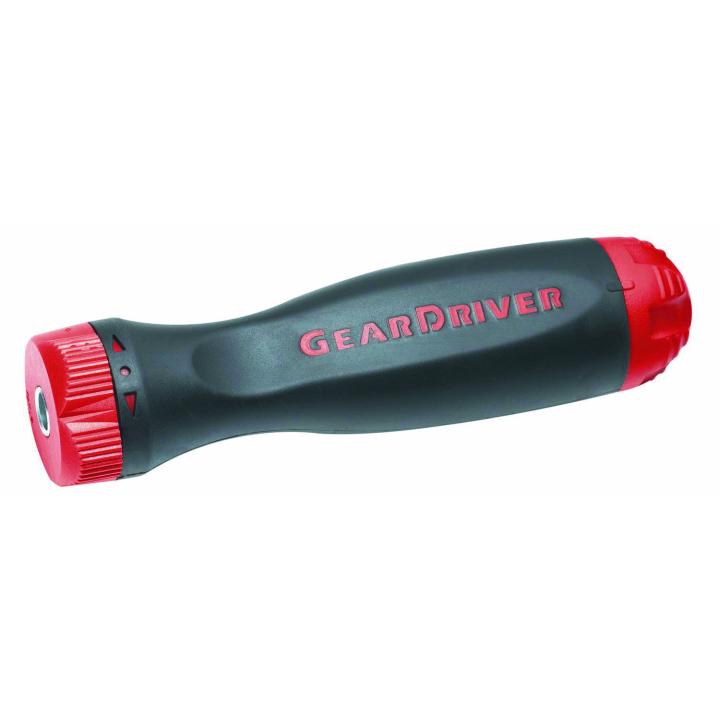
Unlocking Versatility: Screwdriver Types and Their Uses
Introduction to Screwdriver Types
Choosing the right screwdriver types is crucial for any DIY project or professional repair job. Screwdrivers are the go-to tool for driving and removing screws, but with so many types available, it can be daunting to know which one you need. Each screwdriver is designed to fit a specific type of screw head, ensuring a tight grip and reducing the risk of stripping the screw.
From flat-head to Phillips, and Torx to hex, screwdrivers come in many forms, each with unique features tailored for different tasks. This guide serves as your introduction to the diverse world of screwdrivers, helping you to understand the basics and make an informed decision for your tool selection.

Understanding Screwdriver Sizes and Measurements
When selecting a screwdriver, understanding the size and measurement system is essential. Screwdriver sizes are usually indicated by the width of the tip or the size of the screw head they are intended to be used with. These measurements can be in millimeters (mm) for the tip width, or as a numerical value for the screw head size, such as #1 or #2 for Phillips head screwdrivers. It’s important to use the correct size to avoid slipping and potential damage to both the screw and the screwdriver.
Sizes can range from small precision screwdrivers for electronics to larger ones for construction. Stubby screwdrivers with short shafts enable access in tight spaces, while longer shafts provide reach where depth is needed. The shank length, often measured in inches or centimeters, also contributes to the tool’s suitability for a particular job. Selecting a screwdriver that matches the size of the screw ensures a better grip and more efficient torque transfer, leading to a successful project outcome.
Choosing the right size not only enhances safety but also the effectiveness of your work. Always ensure that the screwdriver fits snugly into the screw head; a loose fit can strip the screw head and make the job harder. For precision tasks, such as repairing eyeglasses or electronics, opt for screwdrivers with tip sizes that precisely match the intricate screws. Proper sizing is fundamental for efficient screw driving and should not be overlooked in the tool selection process.
Detailed Overview of Screwdriver Types
A deep dive into screwdriver types shows us the vast array of options available. Each type is tailored to fit specific screw heads, offering advantages in grip and torque transfer. Let’s explore the most widely-used screwdrivers and their unique features.
Flat-Head Screwdrivers
Also known as slotted screwdrivers, these have a simple, flat tip. They fit straight into a single-slot screw head. It’s a versatile tool found in almost every toolbox, useful for basic tasks like tightening door hinges.
Phillips Head Screwdrivers
These screwdrivers have a cross-shaped tip and are a staple in various assembly work. They seat deeply in a Phillips screw head, offering more contact area than flat-head types, which means less chance of slippage with proper sizing.
Pozidriv Screwdrivers
An enhanced version of Phillips screwdrivers, Pozidriv has an additional set of ridges at a 45-degree angle to the main cross slot. It provides a firmer engagement and less cam-out, perfect for jobs needing extra torque.
Robertson or Square Screwdrivers
Featuring a square tip, Robertson screwdrivers offer a high-torque capacity without stripping the screw head. They’re excellent for woodworking projects, where a secure grip is paramount.
Torx Screwdrivers
Torx screwdrivers are characterized by their six-point star-shaped tip. They’re built to prevent slipping, making them ideal for automotive tasks where precision is key.
Hex Screwdrivers
Also referred to as Allen screwdrivers, these have a hexagonal tip and are crucial for assembling furniture and bikes. They deliver a tight fit and optimum control during use.
Spanner Screwdrivers
Spanner Screwdrivers have two prongs that match the notches in the head of specialty screws. They are often used in security applications, where screws need to resist common tools and prevent tampering.

Specialty Screwdrivers for Specific Use-Cases
Sometimes tasks demand unique tools. Specialty screwdrivers are crafted for those specific scenarios. These niche tools provide solutions where standard screwdrivers might not suffice. This section highlights screwdrivers designed for particular purposes, illustrating their benefits and applications.
Insulated Screwdrivers for Electrical Work
For electricians, safety takes priority. Insulated screwdrivers are made with non-conductive materials, shielding users from electric shocks. They come with a variety of tips but have one thing in common: protection against electrical currents. Always opt for these when working on live circuits or components.
Magnetic Screwdrivers and Their Advantages
Magnetic screwdrivers hold screws with a magnetic tip. This feature is handy when placing screws in tight spots or preventing them from falling. Especially useful in computer repair or small electronics, they secure tiny parts effortlessly. It’s a practical tool that saves time and simplifies intricate tasks.
Precision and Computer Screwdrivers
Tiny screws require precision tools. Whether it’s fixing glasses, watches, or computers, precision screwdrivers have slim tips for small fasteners. Computer screwdrivers, often part of a precision set, cater to tech repairs. With their fine tips and comfortable grips, these screwdrivers tackle delicate projects with accuracy.

The Importance of Screwdriver Handles and Grips
Choosing the right screwdriver involves more than just the tip type; the handle and grip play a critical role. The handle is where your hand exerts force and guides the tool. It must be comfortable to hold and offer a secure grip to prevent slipping. Handles are often designed to maximize torque while minimizing hand fatigue. Look for designs that feature ergonomic shapes and textured surfaces.
Ergonomic Designs for Comfort
Ergonomic screwdriver handles conform to the natural grip of your hand. They can reduce strain during prolonged use by allowing a more natural hand position. This design feature is especially important for professionals who use screwdrivers for extended periods.
Material and Textures for a Secure Grip
Screwdriver handles come in various materials, including plastic, rubber, and metal. Plastic and rubber handles often have a textured grip for a non-slip surface. This is crucial when working with oily or wet hands. Metal handles may have knurled sections for extra friction.
Impact of Handle Size and Shape
Handle size and shape can influence the force you apply. Larger handles disperse pressure more evenly across your palm, while smaller handles provide precision for fine tasks. The shape of the handle should complement the size of the screwdriver and the nature of the work.
Balance and Control
A well-designed handle offers balance. It aligns with the screwdriver’s shank and tip, allowing precise control over the tool. Balance helps ensure the force is directly transferred to the screw, making your task more efficient.Choose a screwdriver with a handle that feels right in your hand and matches the job. The right grip will not only save your hands from discomfort but also improve your control and the quality of your work.

The Role of Shaft or Shank in Screwdrivers
The shaft, or shank, of a screwdriver connects the handle to the tip and is vital for its function. It’s usually made of sturdy materials like steel to resist bending or twisting when force is applied. The length of the shaft determines the reach of the screwdriver, allowing it to access screws in deep or narrow spaces.
Importance of Shaft Material and Strength
Choosing a screwdriver with a strong shaft is essential to ensure durability and prevent damage during use. A high-quality steel shank can withstand significant torque without warping, ensuring the screwdriver’s longevity and reliability.
Shaft Length and Accessibility
For jobs requiring deep penetration, such as accessing screws inside electronic devices or appliances, a longer shaft is necessary. Conversely, tight spaces require a stubby screwdriver with a short shaft for better maneuverability.
Shaft Shape and Additional Features
Some screwdrivers feature a hexagonal or multifaceted shaft to accommodate a wrench for extra leverage. This adaptability makes them versatile for heavy-duty tasks where more torque is needed. Additionally, a shaft with a smooth finish is easier to clean and maintain, enhancing the tool’s lifespan.
Significance of Drive Tips and Bits
The drive tips and bits of screwdrivers are the components that directly engage with the screw heads, making them critical for successful fastening and unfastening. Selecting the correct tip and bit ensures you’ll avoid stripping the screw head and achieve secure, efficient fastening.
Crucial for Matching Screw Heads
Each screw head shape requires a corresponding screwdriver bit for a proper fit. Using a mismatched bit can lead to slippage, damage to the screw, or even injury. A precise match between the bit and screw head increases grip strength and torque accuracy.
Variety of Drive Tips
There’s a wide variety of drive tips available, designed for different screw types. Flat bits are for slotted screws, while Phillips and Pozidriv tips are intended for their respective screw head designs. Torx and hex bits cater to star and hexagonal head screws, providing a snug fit and higher torque capabilities.
Impact-Resistant and Durable
High-quality drive tips and bits are often made from impact-resistant materials like hardened steel. This toughness ensures longevity and resistance to wear, allowing for consistent performance over time. A durable bit means less chance for stripping screws and more secure fastening.
Interchangeability for Versatility
Many screwdrivers feature interchangeable bits, allowing one tool to accommodate various screw head types. Investing in a set of bits can make one handle adaptable for numerous tasks, saving space in your toolbox and money.
Magnetized Options for Convenience
Magnetized drive tips hold onto the screws, making them particularly useful in tight or hard-to-reach places. They help in keeping screws in place as you position them, streamlining the assembly process and minimizing the frustration of dropped screws.
In conclusion, the significance of drive tips and bits in a screwdriver cannot be overstated. They are vital for the functionality and versatility of the screwdriver, impacting the efficiency, safety, and outcome of the fastening task. Choosing the right drive tip or bit is just as important as selecting the correct screwdriver type and size.
Applications and Uses of Various Screwdriver Types
Understanding the applications and uses of different screwdriver types is essential for any handyman or craftsman. Each screwdriver type is specifically designed to tackle certain jobs, ensuring both safety and efficiency. Here’s a look at where to use some of the most common screwdriver types:
Flat-Head Screwdrivers
Known for their versatility, flat-head screwdrivers are ideal for simple screwing tasks. They’re frequently used in carpentry to adjust furniture, apply hinges, and in automotive work for adjusting slotted screws.
Phillips Head Screwdrivers
Phillips screwdrivers are better suited for tight fastening, making them great for assembling gadgets and appliances. They are also regularly used in woodworking projects.
Pozidriv Screwdrivers
Pozidriv screwdrivers fit into screws more securely, reducing cam-out. Choose these for tasks that need more torque, like constructing decks or assembling heavy-duty furniture.
Robertson or Square Screwdrivers
Square screwdrivers are perfect for jobs that require a snug fit, like cabinetry or installing certain types of hardware. Their design reduces the chance of stripping the screw head.
Torx Screwdrivers
Torx, with their star-shaped tip, provide a high amount of torque without slipping. They are commonly used in car manufacturing and for assembling electronic devices.
Hex Screwdrivers
Also known as Allen screwdrivers, they’re used for putting together IKEA furniture or bike assembly. They provide a high torque and good control over the fastening process.
Spanner Screwdrivers
Commonly used for security applications, spanner screwdrivers are perfect for light fixtures or public bathroom installations. They are designed to drive tamper-resistant screws.
These varied screwdriver types make it possible to perform a wide range of tasks. Whether tightening a loose screw on a door handle or assembling a computer desk, using the right screwdriver for the job is key to a smooth and successful outcome. By knowing which type fits each application, you can lead any project to a professional and sturdy finish.

Tips for Selecting the Right Screwdriver for a Project
Selecting the right screwdriver types for your project is crucial for efficiency and success. Here are key tips to help you choose the best tool for the job:
Consider the Screw Head
Check the screw head type you are working with. Match the screwdriver type to the screw head for a snug fit. This prevents slipping and potential damage to both the screw and the tool.
Assess the Job Requirements
Evaluate the project’s needs. Do you need torque, precision, or electrical safety? Choose a screwdriver designed for these specific requirements, such as a Torx for high-torque tasks or an insulated screwdriver for electrical work.
Opt for Quality Materials
Pick screwdrivers made from durable materials like hardened steel. Quality materials ensure longevity, better performance, and less wear and tear.
Get a Comfortable Handle
Select a screwdriver with an ergonomic handle. A comfortable handle reduces hand fatigue and provides better control, especially during prolonged use.
Size Matters
Ensure the screwdriver size matches the screw size. A properly sized screwdriver will fit the screw head exactly, which is crucial for efficient turning and avoiding damage.
Magnetic Tips Can Help
Consider a screwdriver with a magnetic tip for convenience. This feature is especially helpful when working in tight spaces where screws can easily be dropped.
Multipurpose Tools for Versatility
If you often switch between tasks, consider a screwdriver with interchangeable bits. A multipurpose tool can save you time and space by covering a range of screw types with one handle.By following these tips, you can make an informed decision and choose the right screwdriver that’ll serve you well for various projects.

